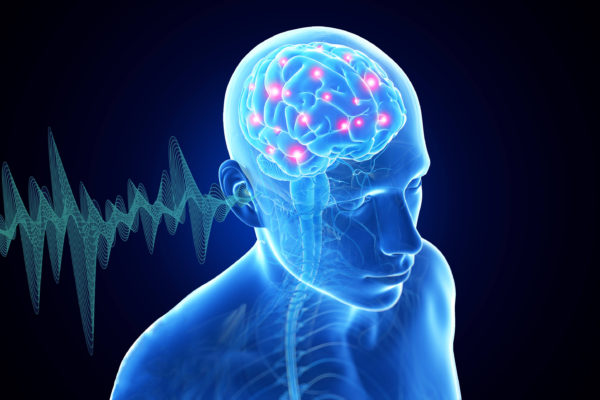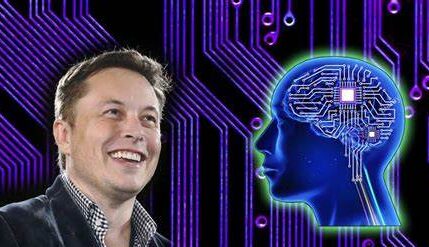笔者提出一个假设,狗失明之后可以用嗅觉来敏锐地感知周围的环境。人失明之后,是否可以用听觉来“看到”周围环境呢?
人类失去视觉后,听觉通常会变得更加敏锐,以帮助他们感知和导航周围的环境。这被称为“听觉增强”或“听觉代偿”。
当一个人失去视觉时,他们的大脑会开始更多地依赖听觉来获取关于周围环境的信息。他们可能会学会辨别声音的来源、方向和距离,甚至可以通过声音的回音来判断物体的位置和尺寸。此外,触觉和其他感觉也可能会变得更加敏锐,帮助他们建立对环境的更全面的认识。
一些失明的人可能会通过使用声纳(声波导航)技术来进一步增强他们的导航能力。声纳利用声波在环境中传播并回音的原理,可以帮助人们感知物体的位置和形状。
尽管听觉增强可以帮助失明的人更好地适应他们的生活环境,但需要指出的是,这并不意味着失明后的听觉会变得与狗的嗅觉一样敏锐。狗的嗅觉系统与人类的听觉系统在生物学上有很大的差异,因此两者之间的能力和应用是不同的。
就是说,人类失去视觉后,只能通过听觉代偿来“感觉”这个世界,而不能“看到”。

那么,能不能有一种转换器,把声音信号转换成为视觉信号,让失明的人通过听觉,“看到”周围环境呢?
目前科学界正在研究开发一种称为“感知替代”或“感知增强”的技术,旨在将一个感官的信息转换成另一个感官可以理解的形式,以帮助失去某种感官功能的人更好地适应生活。
关于这种转换器,从声音信号直接转换为视觉信号的想法是有一定的理论基础的,但目前尚未实现一种完全能够让失明的人通过听觉来“看到”周围环境的技术。
有一些研究已经在利用声音来创建虚拟视觉体验方面取得了一些进展。例如,一些科学家和工程师正在探索声音的空间编码,以创建一种被称为“声音图像”的概念,可以通过声音模拟物体的位置、形状和运动。这种技术可能会通过耳机或其他听觉装置向用户传递声音信号,以帮助他们更好地感知环境,或者说“看到”周围环境。
然而,要将声音信号完全转换为与正常视觉相当的图像,涉及到复杂的神经科学、计算机视觉和工程技术。目前还没有一种广泛可用且高度成功的方法来实现这种转换。尽管如此,科学家和工程师们在这方面的研究和努力仍在继续,未来可能会有更多令人兴奋的进展。

是否可以利用现代AI技术,或者脑机接口,实现这个目标?
现代AI技术和脑机接口确实在实现失明人通过听觉来感知环境方面具有潜力,但目前仍处于研究和发展阶段,尚未达到完全实现的水平。
AI技术可以用于处理声音信号,并将其转换成一种失明人可以理解的形式,例如声音图像。这需要复杂的信号处理、机器学习和计算机视觉技术,以将声音的空间和频谱信息转化为可视化的信息。然而,要实现高质量的声音图像,还需要解决许多技术挑战。
脑机接口是另一种有潜力的技术,可以将人的大脑活动与外部设备连接起来,实现感知替代或增强。一些研究已经在探索如何利用脑电信号(EEG)来识别听觉信息,以帮助失明人感知环境。然而,脑机接口技术也面临许多复杂的问题,包括信号解码、数据传输和脑部适应等方面的挑战。
虽然这些技术在理论上具有潜力,但实际应用仍然面临许多技术、伦理和安全等方面的问题。此外,每个人的大脑和感知系统都是独特的,因此实现通用且高效的解决方案可能需要更多的研究和发展。
总的来说,尽管现代AI技术和脑机接口为实现失明人通过听觉感知环境提供了希望,但要实现这个目标还需要克服许多技术和科学上的难题。未来的研究和创新可能会带来更多突破和进展。

如何实现让失明的人通过耳朵来“看到”世界?让失聪的人通过眼睛来“听到”声音?让哑巴的人通过耳朵来“说出”话来?
实现让失明的人通过耳朵来“看到”世界,让失聪的人通过眼睛来“听到”声音,让哑巴的人通过耳朵来“说出”话来,涉及复杂的跨学科领域,包括神经科学、计算机科学、工程学和医学等。尽管目前尚未达到完全实现的水平,但以下是一些可能的方法和技术,用于探索如何实现这些目标:
声音图像和感知替代: 使用计算机视觉和机器学习技术,将声音信号转换为可视化的图像,以帮助失明人“看到”声音。类似地,通过声音传达空间位置和物体信息,帮助失聪人“听到”环境中的声音。这需要开发高级的信号处理和模式识别算法,以实现声音和视觉之间的转换。
脑机接口: 利用脑机接口技术,将大脑活动与外部设备连接起来,以实现感知的替代或增强。通过训练,失明、失聪或哑巴的人可能能够学会将大脑信号转化为感知体验。例如,失明人可以通过脑电信号来控制一个设备,通过听觉感知环境信息。
感知训练和神经可塑性: 培养和增强其他感官,以弥补失去的感官。例如,失明人可能会经过听觉和触觉训练,以提高他们在这些领域的感知能力。神经可塑性是大脑适应性变化的能力,这种训练可以通过促进大脑区域的适应来帮助实现感知替代。
生物医学工程: 利用先进的生物医学工程技术,例如植入式设备或神经刺激技术,来传递感官信息。例如,失聪的人可能通过植入式装置来刺激听觉神经,使他们能够感知声音。
虚拟现实和增强现实: 利用虚拟现实(VR)和增强现实(AR)技术,通过模拟声音、视觉和触觉等感官,帮助失能人士获得更丰富的感知体验。
要实现这些目标,需要持续的研究和创新,解决技术、伦理、安全和生理学等方面的挑战。尽管目前仍存在许多限制和未知领域,但随着科学和技术的不断进步,这些目标的实现可能会逐渐成为现实。

The author proposes a hypothesis that after losing their sight, dogs can use their sense of smell to keenly perceive their surrounding environment. In the case of humans losing their vision, can they use their sense of hearing to “see” the surrounding environment?
When humans lose their sight, their sense of hearing often becomes more acute to help them perceive and navigate their environment. This is referred to as “auditory enhancement” or “auditory compensation.”
Upon losing their vision, individuals may begin to rely more on their sense of hearing to gather information about their surroundings. They may learn to distinguish the source, direction, and distance of sounds, and may even determine object positions and sizes through echoes. Additionally, their sense of touch and other senses may become more acute, aiding in a more comprehensive understanding of the environment.
Some individuals who are blind might further enhance their navigational abilities by using echolocation (sonar) techniques. Sonar employs the principle of sound waves propagating through the environment and bouncing back, assisting individuals in perceiving the positions and shapes of objects.
While auditory enhancement can assist blind individuals in better adapting to their living environment, it should be noted that this does not imply that post-blindness hearing becomes as acute as a dog’s sense of smell. The biological differences between a dog’s olfactory system and a human’s auditory system mean that their abilities and applications are distinct.
In summary, when humans lose their vision, they can only “sense” the world through auditory compensation, rather than “seeing” it.
So, could there be a device that converts sound signals into visual signals, enabling blind individuals to “see” their surrounding environment through their sense of hearing?
Currently, the scientific community is researching and developing a technology known as “sensory substitution” or “sensory enhancement,” aiming to transform sensory information from one modality to another, comprehensible modality to assist individuals who have lost a particular sensory function in better adapting to life.
Regarding this device, the idea of directly converting sound signals into visual signals has a theoretical foundation, but a technology that fully enables blind individuals to “see” their surroundings through hearing has not yet been achieved.
Some progress has been made in utilizing sound to create virtual visual experiences. For example, scientists and engineers are exploring spatial encoding of sound to create a concept called “sound images,” which simulate the positions, shapes, and movements of objects through sound. This technology could potentially deliver sound signals to users through headphones or other auditory devices, helping them better perceive their environment or “see” their surroundings through hearing.
However, fully translating sound signals into visual images equivalent to normal vision involves intricate neural science, computer vision, and engineering techniques. There is currently no widely available and highly successful method for achieving this conversion. Despite this, ongoing research and efforts in this field continue, and exciting progress may be on the horizon.
Can modern AI technology or brain-computer interfaces achieve this goal?
Modern AI technology and brain-computer interfaces indeed hold potential in enabling blind individuals to perceive their environment through hearing, but they are currently in the research and development stages and have not reached full implementation.
AI technology can be used to process sound signals and convert them into a form that blind individuals can understand, such as sound images. This requires advanced signal processing, machine learning, and computer vision techniques to transform spatial and spectral information of sound into visualized information. However, achieving high-quality sound images still presents many technical challenges.
Brain-computer interfaces are another promising technology that can connect brain activity to external devices, achieving sensory substitution or enhancement. Some research has explored using electroencephalogram (EEG) signals to recognize auditory information, assisting blind individuals in perceiving their environment. However, brain-computer interface technology also faces complex issues such as signal decoding, data transmission, and brain adaptation.
While these technologies hold theoretical potential, practical applications still encounter challenges in terms of technology, ethics, safety, and physiology. Additionally, each person’s brain and sensory system are unique, so achieving a universal and effective solution may require further research and development.
In conclusion, although modern AI technology and brain-computer interfaces offer hope in enabling blind individuals to perceive their environment through hearing, realizing this goal requires overcoming various technical and scientific challenges. Future research and innovation may bring about more exciting breakthroughs.
How can we achieve the goal of enabling blind individuals to “see” the world through their ears? Allowing deaf individuals to “hear” sounds through their eyes? Enabling mute individuals to “speak” through their ears?
Realizing the goal of enabling blind individuals to “see” the world through their ears, allowing deaf individuals to “hear” sounds through their eyes, and enabling mute individuals to “speak” through their ears involves complex interdisciplinary fields, including neuroscience, computer science, engineering, and medicine, among others. While full implementation has not been achieved at present, the following are potential methods and technologies to explore how these goals could be achieved:
- Sound Images and Sensory Substitution: Utilize computer vision and machine learning technologies to convert sound signals into visual images that blind individuals can “see.” Similarly, convey spatial locations and object information through sound to assist deaf individuals in “hearing” sounds in their environment. This requires developing advanced signal processing and pattern recognition algorithms to achieve the conversion between sound and vision.
- Brain-Computer Interfaces: Use brain-computer interface technology to connect brain activity with external devices, achieving sensory substitution or enhancement. Through training, blind, deaf, or mute individuals might learn to convert brain signals into perceptual experiences. For example, blind individuals could control a device through electroencephalogram (EEG) signals to perceive environmental information through hearing.
- Sensory Training and Neuroplasticity: Foster and enhance other senses to compensate for lost ones. For instance, blind individuals could undergo auditory and tactile training to improve their perception abilities in those domains. Neuroplasticity, the brain’s adaptive changes, could aid in achieving sensory substitution by promoting adaptability in specific brain regions.
- Biomedical Engineering: Employ advanced biomedical engineering techniques, such as implantable devices or neural stimulation technologies, to deliver sensory information. For example, deaf individuals might receive sound perception by stimulating auditory nerves through implanted devices.
- Virtual and Augmented Reality: Utilize virtual reality (VR) and augmented reality (AR) technologies to simulate sensory experiences like sound, vision, and touch, assisting differently-abled individuals in gaining richer perceptual experiences.
Achieving these goals requires ongoing research and innovation to address challenges in technology, ethics, safety, and physiology. Despite existing limitations and unknowns, scientific and technological progress may gradually turn these goals into reality.
————————
Writer: AK(Canada)
Editor: Runan Liu (China) / Akari Ito (Japan)
Proofreader: Runan Liu (China) / Ruihan Xiang (Singapore)
Art editor: Yilin Wen(China)
Editor Leader: Yuba (Nepal)
Director: Michael (Canada)


